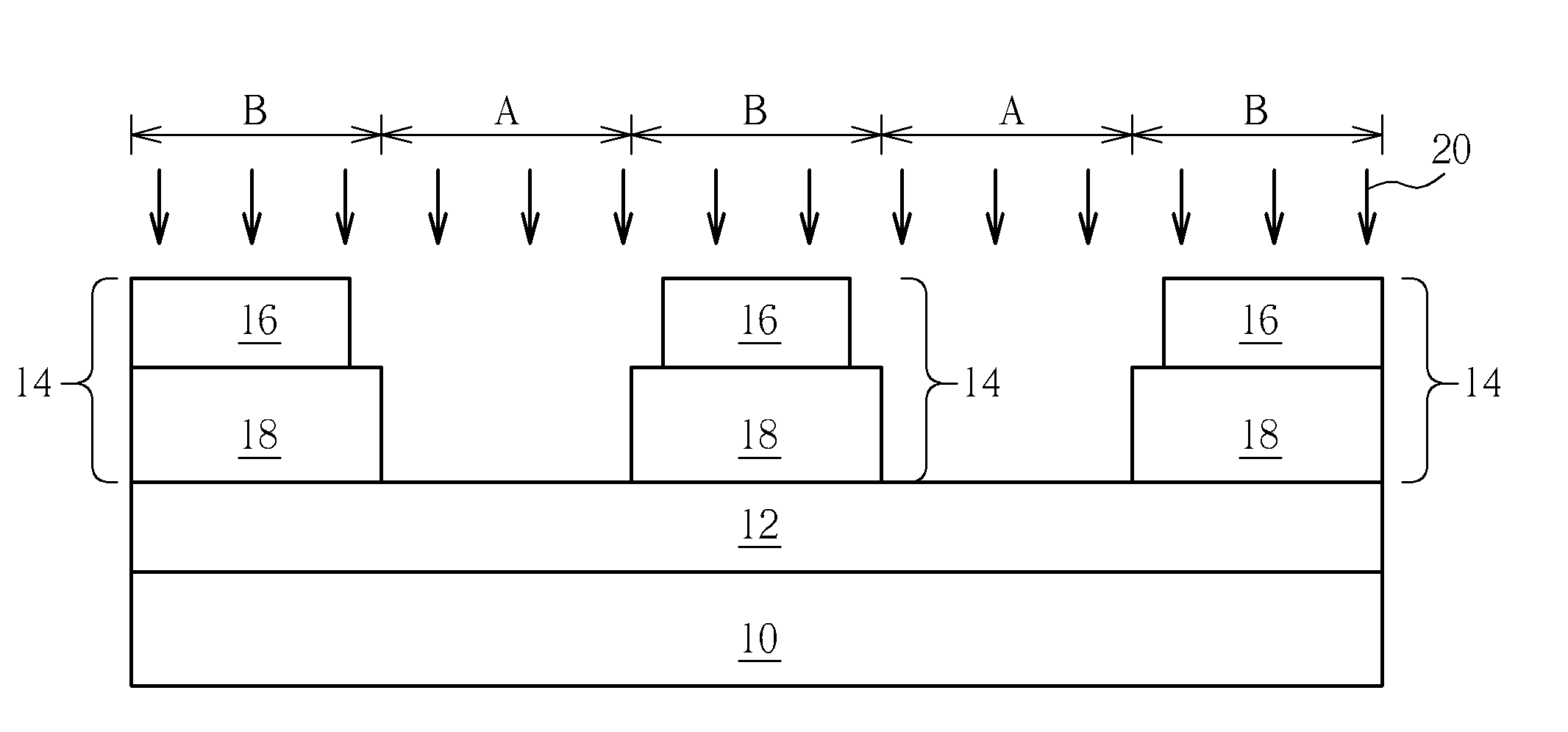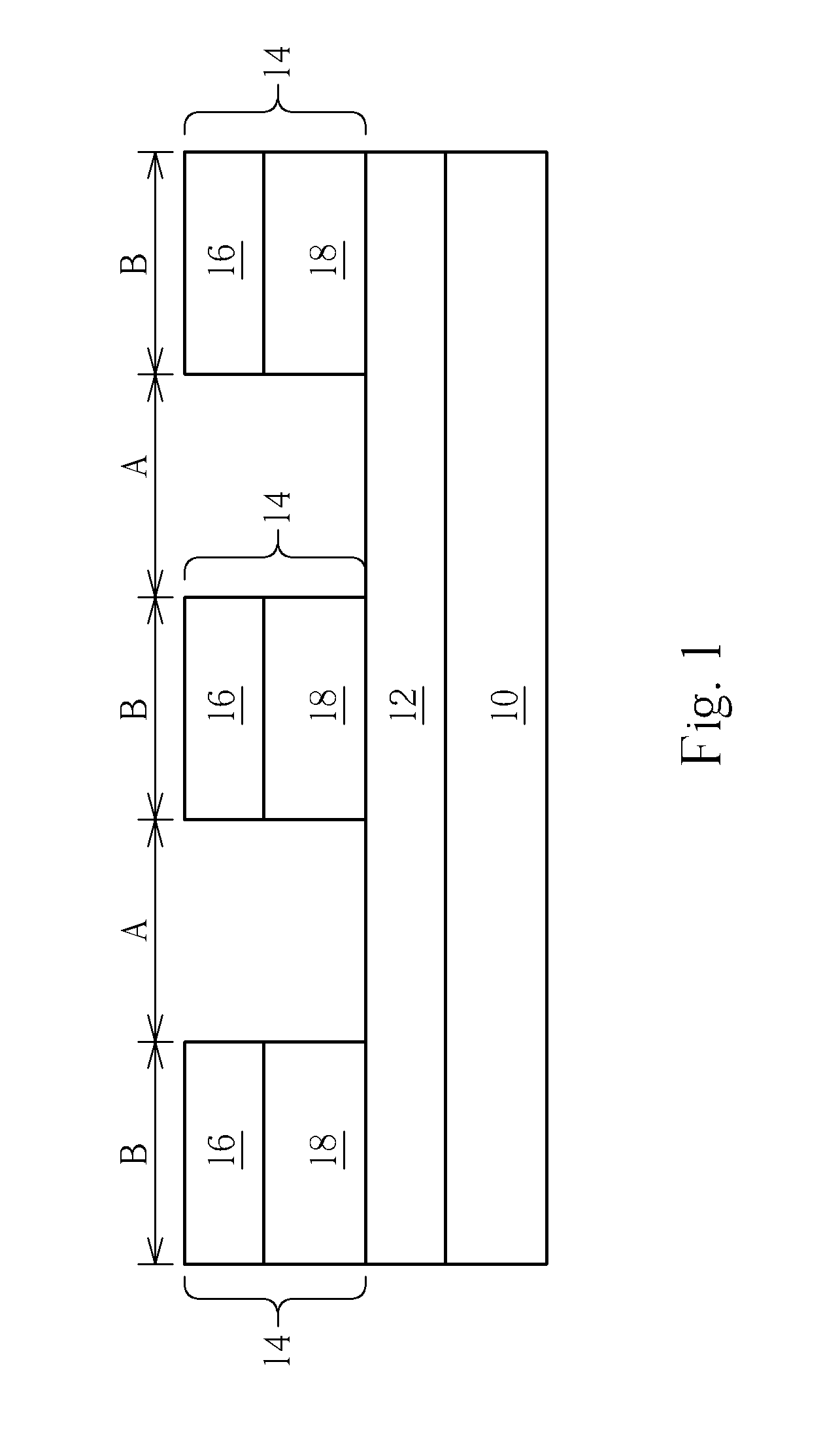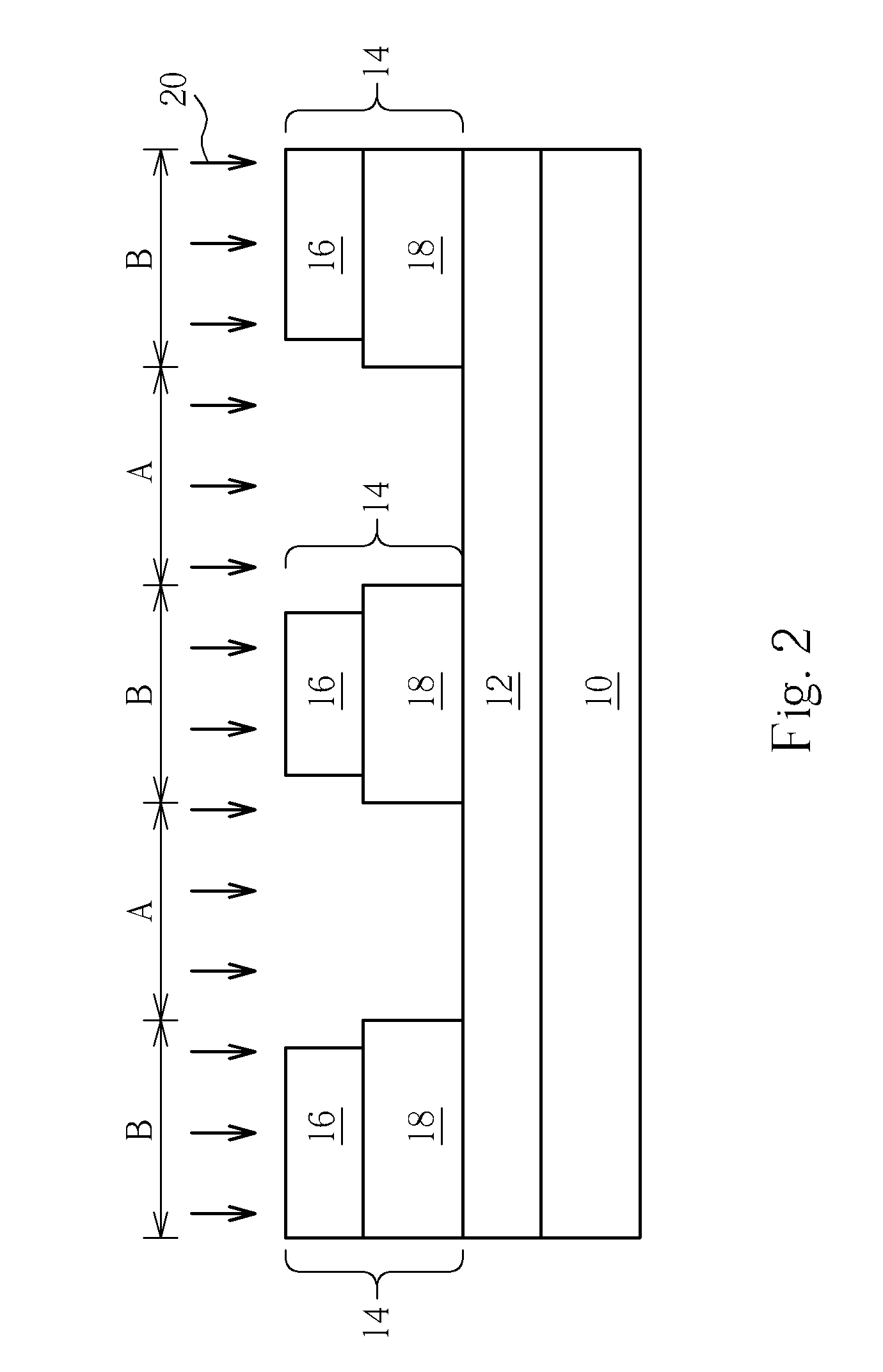Semiconductor device and method of fabricating a ltps film
a low-temperature polysilicon, semiconductor technology, applied in the direction of semiconductor devices, electrical equipment, transistors, etc., can solve the problems of affecting the electrical performance affecting the uniformity of the semiconductor device, and affecting the mobility of the carrier. the effect of uniformity and mobility of the carrier
- Summary
- Abstract
- Description
- Claims
- Application Information
AI Technical Summary
Benefits of technology
Problems solved by technology
Method used
Image
Examples
Embodiment Construction
[0020] Referring to FIGS. 1 and 2, FIGS. 1 and 2 are schematic diagrams of a method of fabricating an LTPS film according to the present invention. As shown in FIG. 1, a substrate 10, such as a glass substrate, a quartz substrate, or a plastic substrate, is provided. An amorphous silicon film 12 is formed on the substrate 10, and a laser isolation pattern 14, which is composed of a laser absorption layer 16 and an insulating layer 18, is formed to cover portions of the amorphous silicon film 12. For example, a plasma enhanced chemical vapor deposition (PECVD) is used to continuously deposit the amorphous silicon film 12, the insulating layer 18 and the laser absorption layer 16 on the substrate 10. At least one channel region A and at least one non-channel region B surrounding the channel region A are defined in the amorphous silicon film 12. The laser absorption layer 16 can be formed of at least one material selected from amorphous silicon, polysilicon, metal oxide (including TiO2...
PUM
| Property | Measurement | Unit |
|---|---|---|
| temperature | aaaaa | aaaaa |
| temperature | aaaaa | aaaaa |
| temperature | aaaaa | aaaaa |
Abstract
Description
Claims
Application Information
 Login to View More
Login to View More - R&D
- Intellectual Property
- Life Sciences
- Materials
- Tech Scout
- Unparalleled Data Quality
- Higher Quality Content
- 60% Fewer Hallucinations
Browse by: Latest US Patents, China's latest patents, Technical Efficacy Thesaurus, Application Domain, Technology Topic, Popular Technical Reports.
© 2025 PatSnap. All rights reserved.Legal|Privacy policy|Modern Slavery Act Transparency Statement|Sitemap|About US| Contact US: help@patsnap.com



